According to the United States Food and Drugs Administration, spring water should be bottled directly at the source without any intervention (such as water treatment or additives). Such water is naturally filtered through underground rock formations and is saturated with healthy minerals during its subterranean journey.
Depending on the geology around a particular spring, the mineral makeup and intensity of spring water vary. Still, most spring water brands on the market boast a healthy level of essential minerals (such as calcium, magnesium, and potassium) and a satisfying taste.
Here at WaterDefense, we consider spring water the best drinking water. But there are many bottled spring water brands on the market, so you might not know which one to pick.
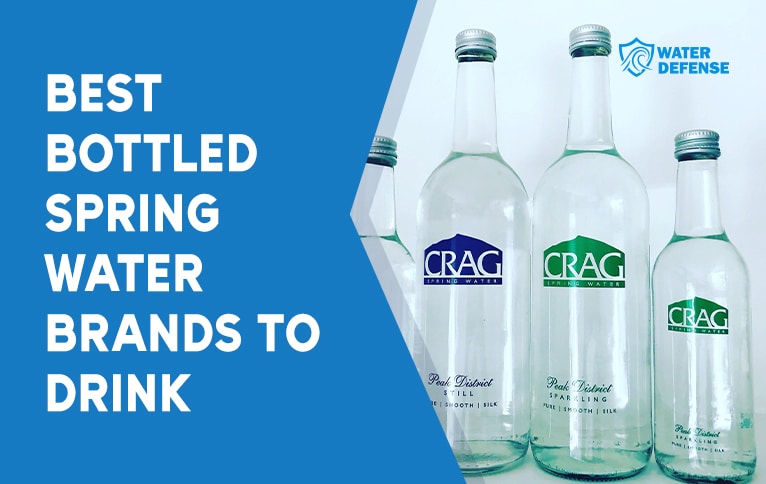
That’s why we put together this list detailing the mineral makeup, pH levels, and sources of the best bottled spring water brands out there. Keep reading to find which spring water brand is the right fit for you.
1. Mountain Valley Spring Water
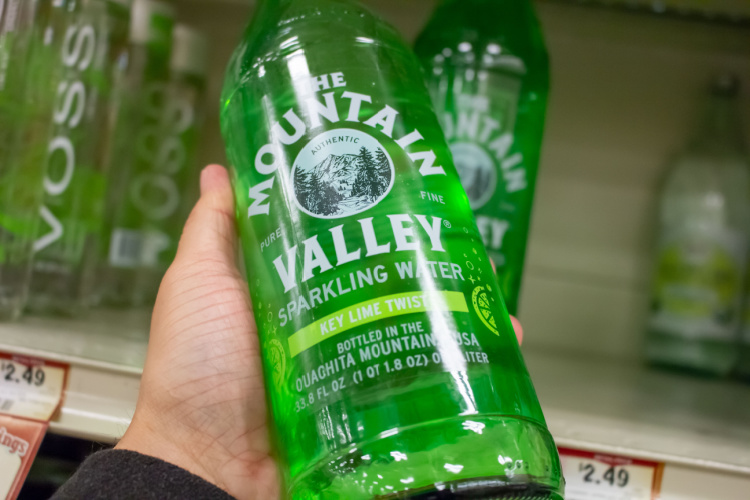
Since 1871, Mountain Valley Spring Water has been one of the most popular bottled water brands in the United States. It’s popular not only because the brand is a domestic business but also because it has a balanced pH of 7.3 to 7.7, excellent mineral content, and great taste.
The water comes from a valley in the Ouachita Mountains (hence the name) within the borders of Arkansas. The granite-based aquifers naturally eliminate potential impurities from the water since granite has excellent absorption and adsorption qualities.
In addition to natural filtration, the granite provides the water with lots of minerals. As such, the Mountain Valley Spring Water approximates mineral water in total dissolved solids (TDS) with 220 mg/L. Just for reference, mineral water is spring water with TDS levels above 250 mg/L.
Calcium is the most present mineral in Mountain Valley, with 67 mg/L.
Mountain Valley is completely sodium-free, which is fantastic since sodium is harmful in large quantities and for people suffering from cardiovascular diseases.
Due to its rich mineral makeup, Mountain Valley has a slightly bitter and crisp taste. Although it won’t be everyone’s cup of tea, many consumers find it appealing.
2. FIJI Water
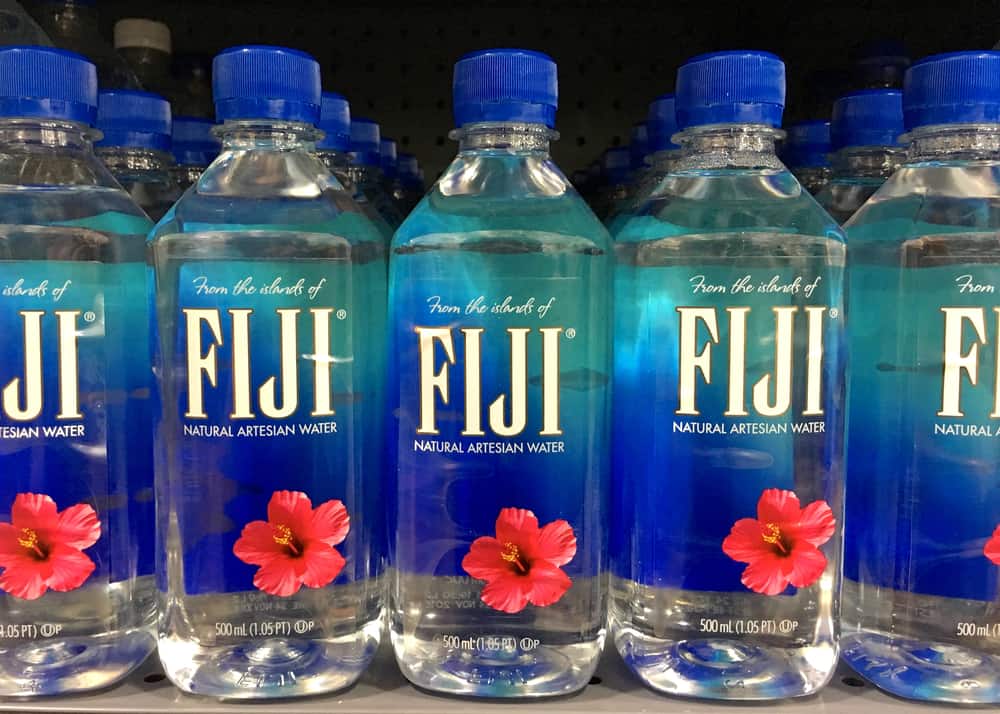
Fiji is one of the best-selling brands, owing its popularity to celebrity and influencer campaigns. However, attributing its status only to these campaigns would be unfair since it’s one of the best-tasting waters on the market and has a balanced mineral content.
The Fiji water comes from the volcanic craters of Viti Levu on Fiji’s largest island. These craters are hundreds of miles from the nearest human settlements and industrial centers, so the water is well protected from external contamination.
In addition, the water passes through volcanic aquifers that rids it of potential contaminants during its century-long journey. It’s also endowed with many naturally occurring minerals in these aquifers. Ultimately, it spurts out of the earth with 222 mg/L of total dissolved solids.
Similar to all spring water, Fiji’s water has calcium and magnesium, but these minerals are at 17.9 and 14.7 mg/L, respectively, so the water isn’t as bitter as Mountain Valley. On the contrary, it’s one of the most silica-rich water brands in the niche at 93.4 mg/L, which gives it an enjoyable taste, smooth texture, and light mouthfeel.
In addition to everything else, it’s naturally alkaline, with a pH value of 7.7.
3. Waiākea Hawaiian Volcanic Water
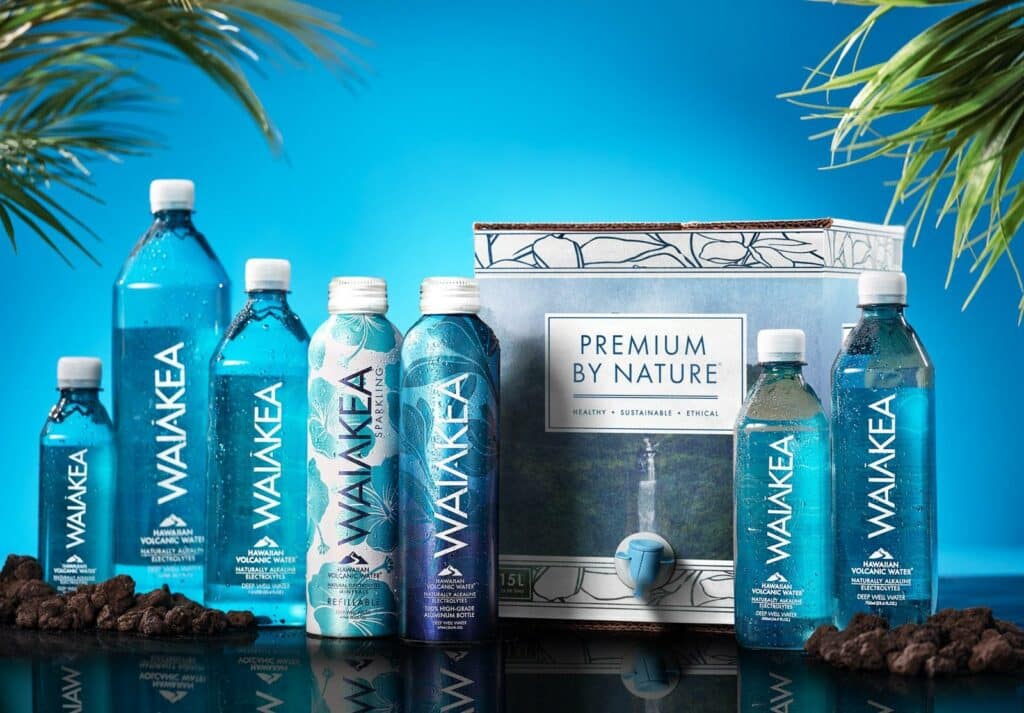
Waiākea Hawaiian Volcanic Water is similar to Fiji in many senses. It journeys through volcanic rock formations before its bottling, is rich in silica, has an alkaline pH value, and is sourced on an island.
As the product name suggests, the water comes from Hawaii. More precisely, it originates from a deep well in Mauna Loa volcano’s close vicinity on Big Island. Since the volcano is still active, the Waiākea well is far from human populations and industrial centers.
Waiākea’s water is essentially rainwater, but volcanic craters absorb any potential contaminants found in rainwater before it reaches the Waiākea well and is collected there. So, the brand can bottle its water at the source without any treatment.
However, Waiākea isn’t as rich in minerals as Fiji. It only has 82 mg/L of TDS. Its mineral content is also on the low end, with levels of essential minerals ranging between 4 and 7 mg/L.
The only exception to these is silica. Waiākea has 44 mg/L of silica, which gives it a smooth, sweet taste and mouthfeel.
The water has a slightly alkaline pH value between 7.6 and 8.2.
As the cherry on top, the brand practices sustainability, local philanthropy, and source protection and prioritizes eco-friendliness. To that end, it distributes its water only in recycled aluminum cans, Oceanplast bottles (the brand’s recycled PET bottling), and reusable bags placed in a box.
4. Acqua Panna
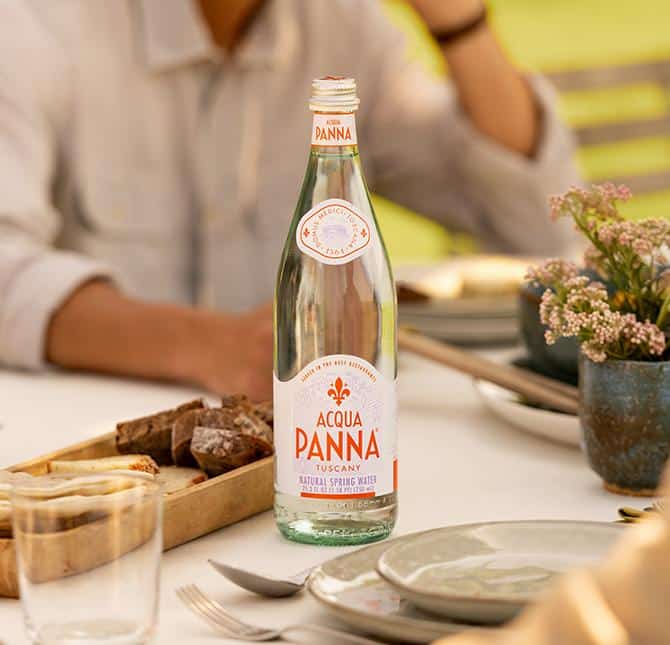
Acqua Panna, a premium bottled water brand from Italy, is among the most revered and commonly distributed brands globally. It’s also the preferred option of many high-end cafés and restaurants thanks to its velvety texture and soft mouthfeel.
The water originates from a spring located in the hills of Tuscany. Since its discovery in 1594, the spring has been well-protected from human, animal, and, later, industrial contamination.
Additionally, the water from the spring flows through underground rock formations for fourteen years until it reaches the spring. During this journey, it sheds whatever impurities it might have and picks up minerals from the surrounding rocks.
When it finally spurts from the ground, it has a rich mineral content with 188 mg/L of TDS and high alkalinity with a pH of 8.8. As the minerals that give water bitterness have a low presence (calcium is at 31.5 mg/L and magnesium is at 6.5 mg/L), the water has a pleasant savor.
As a premium water brand, it’s natural that Acqua Panna comes in glass bottles. However, lately, the brand has also started distributing the water in more budget-friendly PET bottles.
5. Icelandic Glacial Water
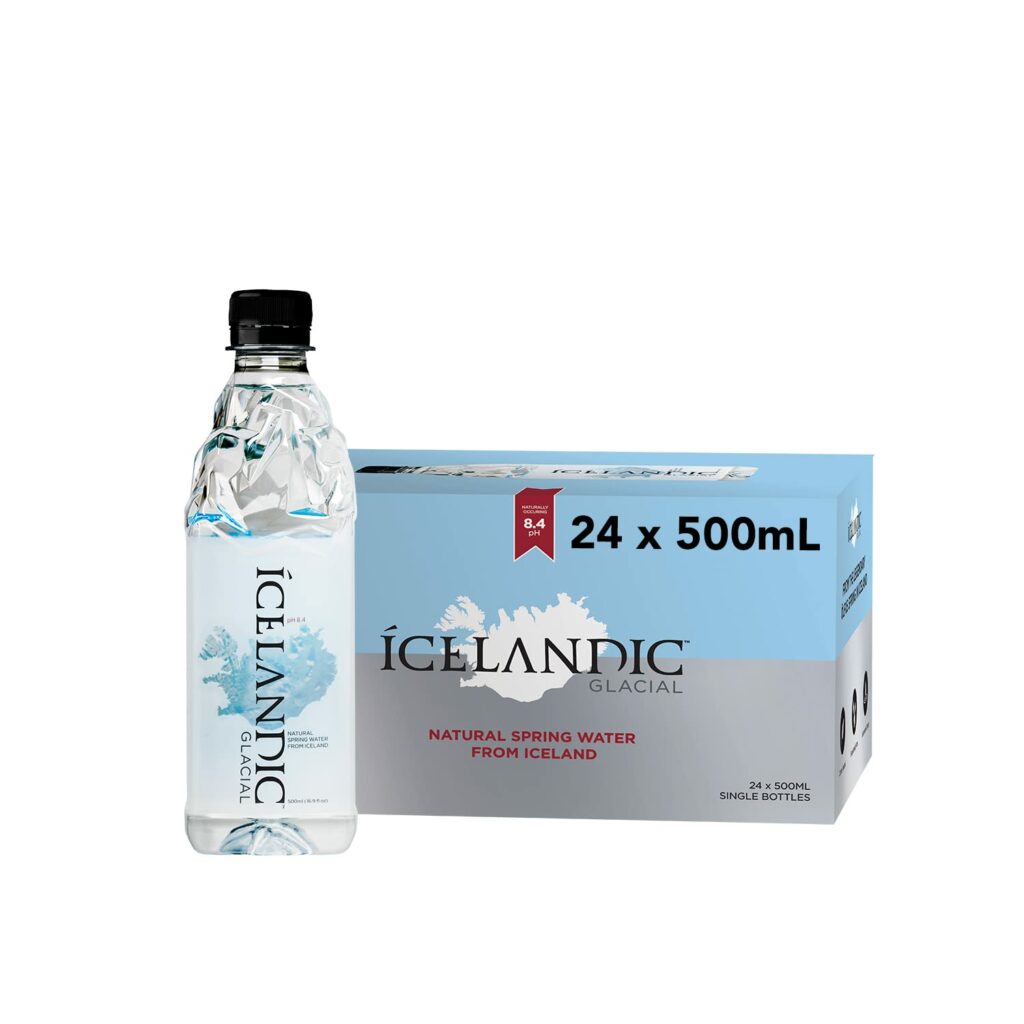
You may have realized that spring water typically originates from the most beautiful places on Earth, like Tuscany, Big Island, or Fiji. Now, our spring tour takes us to Iceland’s majestic glaciers, where the Icelandic Glacial Water is sourced.
Ölfus Springs, the source of Icelandic Glacial, is located inside a lava rock formation. The snowmelt journeys underground for thousands of years until it reaches the springs.
Thanks to the natural filtration properties of these underground rocks, the water has no impurities when collected. But surprisingly, it doesn’t have much mineral content either, with only 62 mg/L of TDS.
The minerals present in Icelandic Glacial Water range between 0 mg/L and 11 mg/L, meaning it has a balanced makeup. To see the full list, you can check out the brand’s water quality report.
Despite its low minerality, the water is alkaline. Its pH value is 8.4.
Lastly, if you care about the aesthetics of the water bottle, this brand is the right fit for you. Icelandic Glacial Water’s unique bottle designs have won many awards since its conception.
6. Antipodes
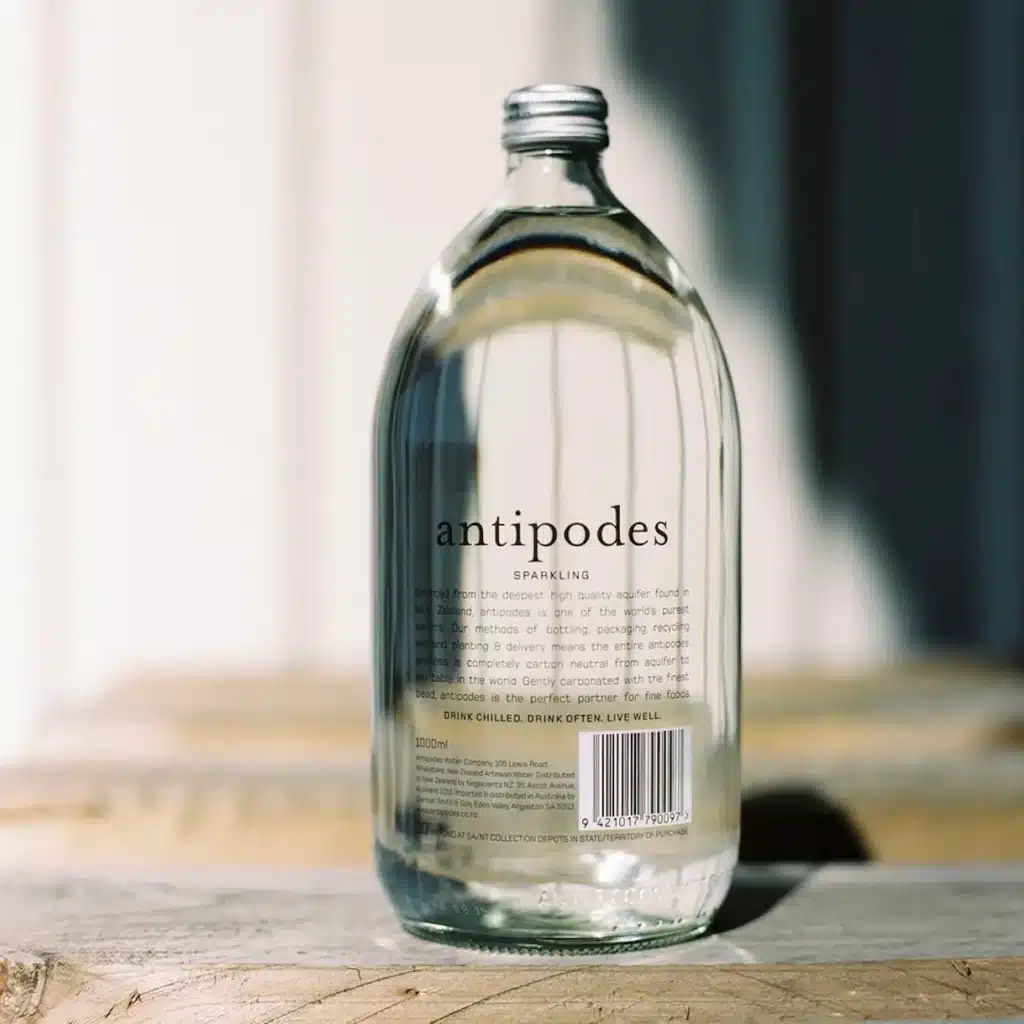
The New Zealandian brand Antipodes is an excellent alternative to Fiji thanks to its smooth taste and texture, inherently neutral pH value of 7, and stylish glass bottles.
Antipodes bottles water that voyages through ignimbrites (cooled volcanic rocks) for 50 to 300 years. In the end, the water accumulates in a deep well that sits 327 meters below the surface.
The brand collects the water through an artesian borehole and bottles it without intervention because ignimbrites naturally filter impurities. These rock formations are also rich in silica, providing water with 76 mg/L of it. It gives Antipodes water a pleasant taste, texture, and mouthfeel.
Except for silica, the mineral content in Antipodes is minimal. It only has 3.5 mg/L of potassium, 3 mg/L of calcium, and no magnesium. Although this may be a problem if you’re looking to get some essential minerals in your body, it’s also why Antipodes is known as one of the best-tasting spring water brands on the market.
7. Summit Spring
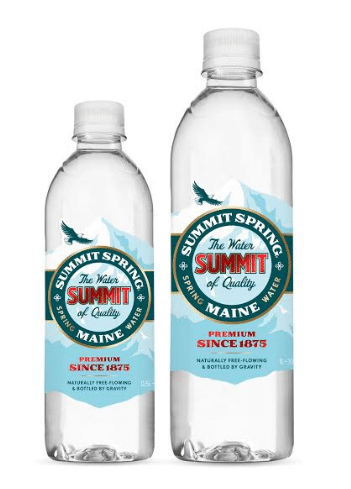
Summit Spring, hailing from the peak point of Cumberland County, Maine, has a long history dating back even further than Mountain Valley to the beginning of the nineteenth century. Back then, locals believed that the water from this spring could cure a number of health conditions like arthritis, kidney issues, and even anxiety, and they started to bottle it.
Although its effect on these ailments requires more scientific research, it doesn’t change the fact that Summit Spring is one of the best spring water brands to originate from the United States.
Before reaching the spring, the water passes through thousands of feet of gravel and sand that naturally filter it. Yet, these geological formations don’t give it too many minerals as it only has 59 mg/L of TDS. Its mineral levels vary between 1 mg/L and 7 mg/L, meaning it has a soft texture (see the water quality report).
Yet, it’s naturally acidic, with a pH of 6.1. As such, it’s one of the most acidic spring water brands on the market.
8. Crag
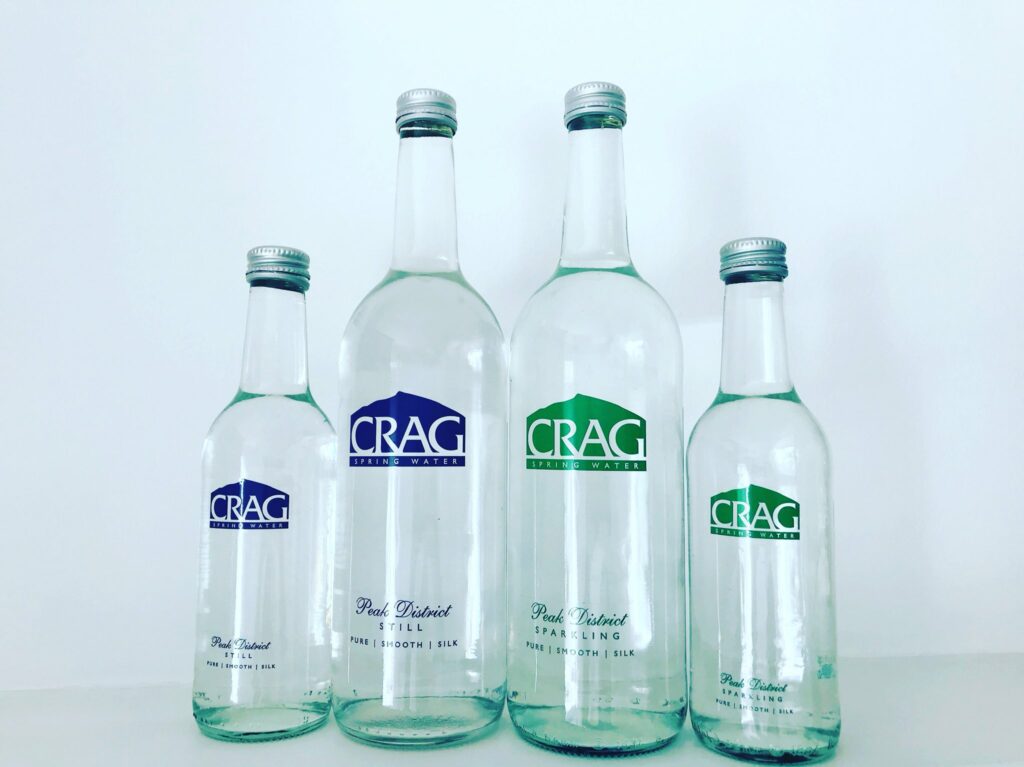
Crag, established only in 2018, is just a baby compared to other high-end bottled water brands. Yet, it has already received taste awards and is considered one of the best spring water brands in the world.
The company’s newness is due to the late discovery of its spring. The brand’s founder discovered the source during an annual water inspection at Wildboarclough in the UK.
Yet, the water has been there since the Carboniferous Period (359.2 to 299 million years ago), naturally filtered by sandstones and mudstones and endowed with a medium mineral content of 120 mg/L of TDS. Calcium has the biggest mineral presence, with 31 mg/L.
Despite its rich mineral profile, the water has a silky quality and creamy mouthfeel. It also has a neutral pH value of 7.2.
Finally, this eco-conscious brand distributes its water in only glass bottles that it later refills.
9. Veen
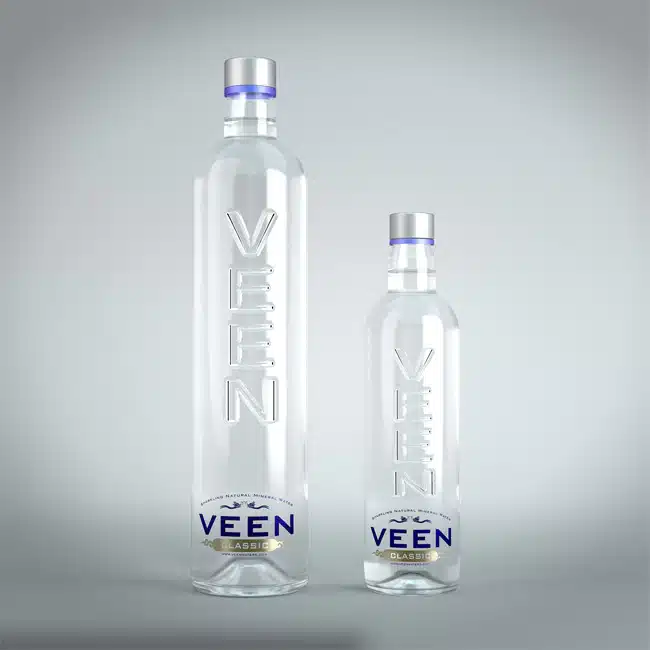
If you’re looking for extremely low-TDS spring water, Veen, sourced in the Arctic wilderness of northern Finland (also known as laplands), might be the best way to quench your thirst.
Veen is among the purest bottled spring water brands on the market, and similar to Crag, it’s been awarded by the Fine Water Society for its taste.
The Konisaajo spring area where Veen comes from is unpopulated and unpolluted. Additionally, the sands and rocks the water passes through during its underground voyage naturally filter it.
These geological formations are low on minerals (when compared to others on our list), as the end product only has 17.22 mg/L of total dissolved solids. The only mineral standing out in Veen’s makeup is silica at 11 mg/L. As a result, the water has a pleasant taste.
On a side note, Veen distributes its water in classy glass bottles and has won awards for its designs.
10. d’ORO
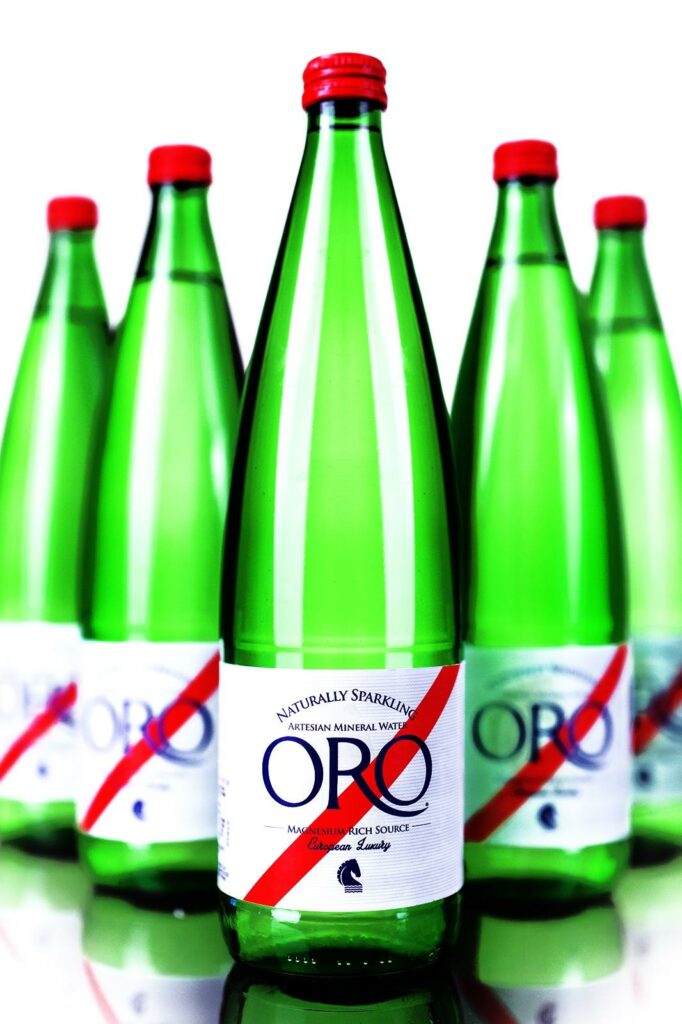
Are you looking for the ultimate luxury in bottled spring water? d’ORO is the most luxurious water on Earth. Its source, located in the Carpathian Mountains of Transylvania, is considered a national pride among Romanians.
d’ORO contains 0,004 mg/L of gold and 0.034 mg/L of silver. Needless to say, both are at perfectly safe levels for human consumption.
In addition to these precious elements, d’ORO is a high-mineral spring water brand with a TDS level of 196 mg/L. In addition, it contains 32 mg/L of calcium, 11 mg/L of magnesium, and 1 mg/L of potassium.
It’s also naturally alkaline, with a pH value of 8.1.

A few years ago Evian was at the top, what happened
Evian is still a top brand, see the article here, but for this article on the very best it didn’t make the cut. The competition has raised the bar and it’s a good thing for consumers.
We have well water, and since our yard backs up to a small farm, we don’t dringk or cook with it. So we’ve been having Mountain Valley spring water delivered in 5-gallon glass bottles for a number of years. We love it, but we originally paid $18 for each 5-gallon glass bottle. A different distributor took over the Mountain Valley spring water deliveries. This distributor’s prices were higher, as expected over time, but have now become predatory.
As I write, family members in a different state get a price of $19.00 each for 5-gallon Mountain Valley spring water glass bottles, which is an excellent price. I understand reasonable price increases, but our local distributor’s pricing is now completely out of hand, at $34 for each 5-gallon Mountain Valley spring water glass bottle.
So we have one other option for 5-gallon spring water delivery which is to get “Crystal Springs” brand spring water in 5-gallon bottles for $12 each. I cannot find comparisons between the spring water from both Mountain Valley & Crystal Springs brands. Can you please advise? Thank you….
Hi Chris, there are different products that Crystal Springs uses, so you need to pay careful attention to each. Their purified water product is on the inexpensive side, while their spring water is much more expensive, just like the price you mentioned. So, first thing is make sure you’re comparing the product that is actually the same or comparable.
Yes, thank you. I am only looking at their Spring Water in 5-gallon bottles (for home delivery).
The local distributor carries only these two Spring Waters in 5-gallon bottles:
Crystal Springs® Spring Bottled Water, 5-Gallon Bottle: $ 11.99 each
Mountain Valley Spring Water, 5-Gallon Bottle: $ 33.99 each
Of course, we love Mountain Valley Spring Water, but because our distributor has now increased its price so radically, we are wondering how the (unfluoridated) Crystal Springs brand Spring Water compares to Mountain Valley Spring Water? We are seriously considering the Crystal Springs brand (unfluoridated) Spring Water but are searching for information as to how it compares with Mountain Valley….. (We only want unfluoridated Spring Water and not any of the other options.)
So if you have information on how those two brands of unfluoridated Spring Waters compare, we would very much appreciate your insights. Thank you!
~~~~~~~~~~~~~~~~~~~~~~~~~~
P.S. The distributor also has the following in 5-gallons in the Crystal Spring brand, as well as Primo Purified water in 5-gallons. But we don’t want any of them since we only want Spring Water (that is unfluoridated).
Crystal Springs® Purified Bottled Water, 5-Gallon Bottle: $ 11.49 each (We’re not interested in this one.)
Crystal Springs® Distilled Bottled Water, 5-Gallon Bottle: $ 11.99 each (We’re not interested in this one.)
Crystal Springs® Fluoridated Spring Bottle, 5-Gallon Bottle: $ 11.99 each (Even though this one is Spring Water, it also contains unwelcome fluoride, so we’re not interested in this one either.)
( All of the above can be seen at the distributor’s link: https://drink.water.com/account/products/list?categoryId=LargeBottle )
I think it would be worth a shot to see how you like the test and service. According to a report that I believe is about their spring water, the test results appear very good. Once you have the service providing their spring water to you, you could also do your own water test to verify the quality of the water to give you further confidence.
Thank you very much, Scott. That report does look very good.
(The local service is if-fy. They’ve delivered our Mountain Valley since 2019 when they took over Mountain Valley in our area from our original distributor which no longer exists. But there are no other delivery options for our area, so we tolerate their blunders.)
I’m not thrilled that the Crystal Springs spring water does not come in glass bottles, but high-quality BPA-free should be ok, I think. I appreciate your input!
I am going through the same thing with my local Arizona provider, Sparkletts. The Mountain Valley, which I have chosen, comes in the 5 gallon glass bottles at $33.99/bottle. Like you, they also offer Palomar Mountain Spring Water (San Diego area source) in a 5 gallon plastic bottle at $12.99. I have printed the analysis reports for each, and Mountain Valley does come out on top. I think the tipping point for me is the glass bottle. We spend a lot of money on other things, so even though the price difference here is significant percentage wise, in terms of what water means to our health, I am going to “splurge” on the Mountain Valley until I can get another spring sourced water delivered in a glass bottle. Or is this money down the drain as it were? Thoughts?
Hard to say, B. Spending triple the money on a bottle of water is challenging to justify, especially if both have similar purity and healthfulness.
Hello, What do you think about Arrowhead spring water? I did not see this on your list. We can get Mountain Valley Spring Water delivered, but it is too expensive for us. Any thoughts or recommendations? We are looking for home delivery, and live in southern Ca. Thank you, Brian
Hi Brian, thank you for reading. Yes, Arrowhead spring water also has a good reputation of good purity and quality.
Poland Spring , ME was bought out from Nestle by Summit . How is this natural spring water ? One of few brands I can get 5gal delivery MD DE PA states meet area.
Hi Darren, thank you for reading. I didn’t understand you question if you would please restate it.
Do these spring waters mineral content stay consistent or can they vary? I tried Fiji for the first time and it tasted no different than the cheapest spring water at Walmart. It didn’t have the great taste that you described. The TDS tested at 62, well short of the 222 you stated.. It was as if it didn’t contain the amount of silica that you mentioned.
Hi Greg, thanks for your feedback and great question. First, natural sources of water will have a natural variation in their mineral content, but it should be generally consistent. In other words, any significant or wild swings normally wouldn’t make sense. Whether Fiji tastes different for you relative to another brand is challenging to quantify due to a variety of factors as you can imagine. I would try another bottle and also grab another brand that has a well-known profile like Evian or one of the Hawaiian “volcanic rock” ones and do a comparison. The differences, depending on ones’ palate, should be quite distinct. If not, maybe there’s something going on with the batch you’re getting locally … as that’s strange.